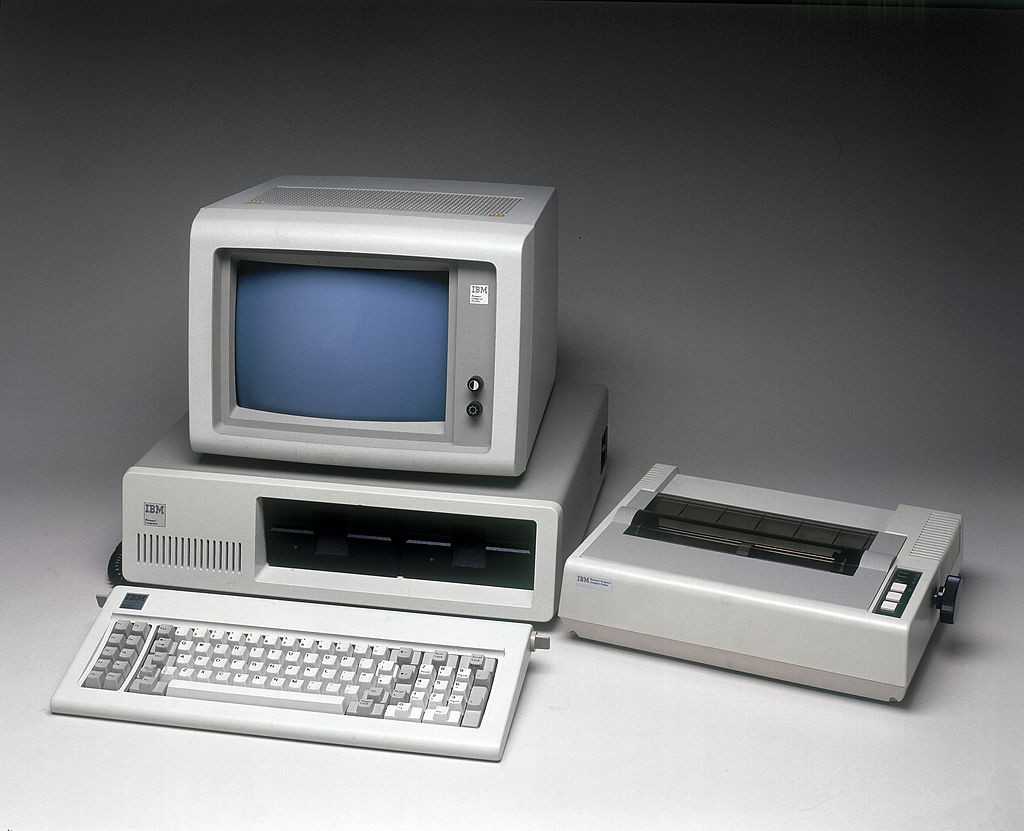
We've already talked about how the personal computer revolution got going in the mainstream in 1977, thanks to the launch of the Commodore PET, the Apple II, and the Radio Shack TRS-80. Within a few years, other companies joined in, like the video game company Atari with its Atari 800 PC, and Sinclair Research with its ZX PC models.
Before all these PCs, most people thought of IBM as the leader in computer hardware and research with its room-size products. IBM decided to jump into the PC trend a few years after 1977.
42 years ago today, on August 12, 1981, the company launched the IBM PC. It quickly dominated the market, but the rise of IBM clones (also known as "IBM Compatibles" caused the maker of the original to eventually exit the PC market.

The IBM PC was not the company's first attempt at making a computer that didn't require a room. In 1975, it launched the IBM 5100 Portable Computer.
While it was pretty huge compared to the PCs that launched two years later, it still was far smaller than the room-sized computers. However, prices for the IBM 5100 "PC" were still high. Depending on its storage, the prices were between $8,975 and $19,975.
IBM continued to release computers that were smaller than the 5100 model over the next several years. However, they were all targeted at businesses and still were far more expensive than the PCs released by other companies from the late 1970s into the early 1980s.
In 1980, IBM decided to finally make a truly personal computer for both home and office use. IBM's archive site stated that the PC's design was created in the company's Boca Raton, Florida offices by a small team of 12 people, led by Bill Lowe, who was the lab director for those offices.
One of the reasons why the first IBM PC went from nothing to its launch within a year was due to the team using parts from third-party companies. That was something that IBM never did with its older room-sized computers.'

We have already talked about how the team behind the first IBM PC picked the Intel 8088 processor to run things inside. The other key part of the PC was its operating system.
ITPro says Microsoft's Bill Gates and Steve Ballmer went to IBM and said they would make the OS for their PC, but that Microsoft would still own the OS and had the right to license its use to other companies outside of IBM.
Amazingly, IBM signed off on this. There was just one small problem on Microsoft's end: they still needed to develop that OS.
They decided to buy the rights to Seattle Computer Products' QDOS for just $50,000. The main developer of that OS, Tim Paterson, left that company to join Microsoft. Over the next several months he and a team at Microsoft would make the newly named PC-DOS work with the first IBM PC.

The final result was the IBM PC 5150, which was first priced at $1,565. It included the computer itself, a monochrome display, and a keyboard.
Users could buy options like a colour display, a printer, floppy disk drives, and more. The software that was included in the PC included the VisiCalc spreadsheet program and the Microsoft Adventure game.
The IBM PC was a huge sales hit, even with its relatively high price compared to the competition. Lowendmac.com reports that sales of the PC were predicted to reach 250,000 units over five years. Instead, the sales came in at 750,000 units by the end of 1983.
Ironically, the use of third-party parts, particularly for its processor and operating system, meant that Intel CPUs and Microsoft's operating system (MS-DOS) could be used by other companies to make IBM-compatible PCs.
That started in 1983, and that really caused an explosion in the PC market. Today, Microsoft and Intel continue to (mostly) dominate the PC industry, while IBM exited the PC hardware market some time ago,
- EnglishLionheart, vitorio and Mutton
-

 3
3



3175x175(CURRENT).thumb.jpg.b05acc060982b36f5891ba728e6d953c.jpg)
Recommended Comments
Join the conversation
You can post now and register later. If you have an account, sign in now to post with your account.
Note: Your post will require moderator approval before it will be visible.